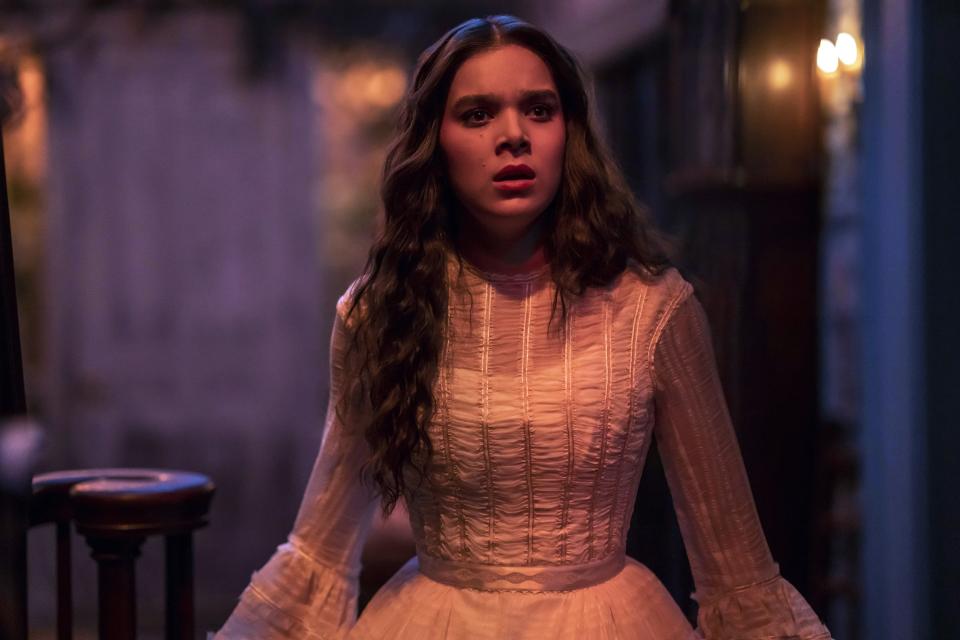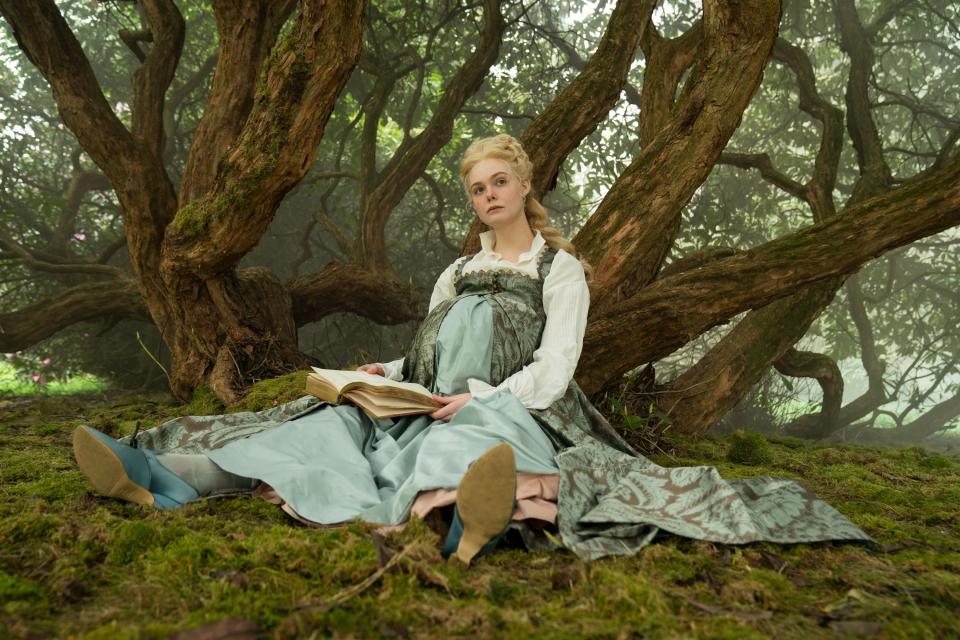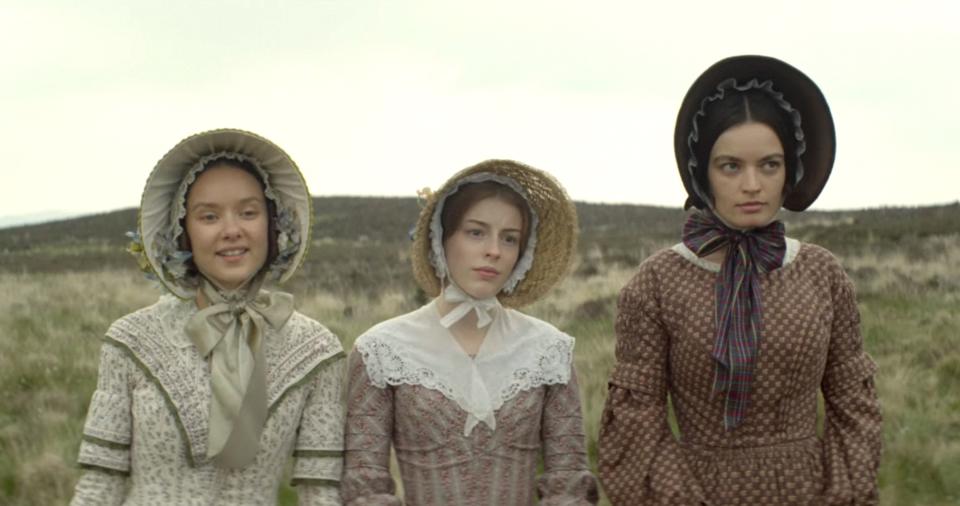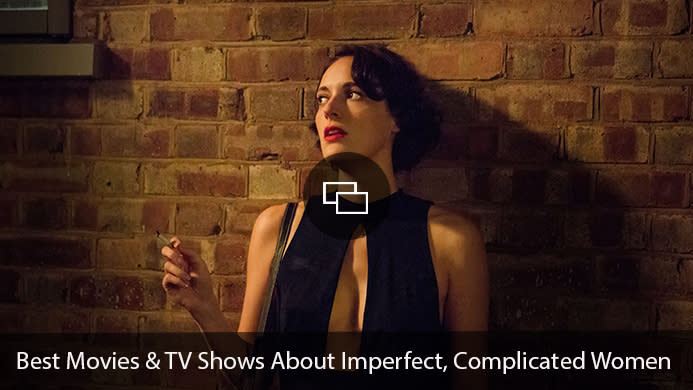"Emily" Joins the Cannon of Modern Reimaginings of Misunderstood Women Throughout History

What did you know about famed American poet Emily Dickinson or England’s poet and novelist with a different surname, Emily Brontë, prior to their recent reimaginings by pop culture? How about Catherine the Great, the Russian ruler (who was actually German) who overthrew her husband, Peter III? My guess is not much outside of history class which peddles the common perception of these women as reclusive, tortured artists who never knew love, as with the Emilys, or a conniving harlot in the case of the latter. Three recent reconsiderations of these women have sought to reexamine their places in history and how not that much has changed since they were alive, actually.
First there was Dickinson, which ran for three seasons on Apple TV+. The show focused on Emily Dickinson’s late adolescence and young adulthood with Hailee Steinfeld in the lead role, set to a soundtrack of indie, pop and rap music, and peppered with modern slang that wouldn’t be out of place on TikTok or in any conversation had by Gen Zers.
More from SheKnows

Then there was The Great, which follows the life of the similarly-aged Catherine the Great, played by Elle Fanning, during her marriage to the loathsome Peter III and her rise to power in Russia. The Great is currently in post-production for season three, which will air on Hulu sometime this year.
And now there’s Emily, in limited release in theaters from February 17. Starring Emma Mackey of Sex Education fame, it is Australian-British actress Frances O’Connor directorial debut—but you can’t tell, with Brontë being rendered in such an impressively loving and nuanced way (her sisters, not so much).
Click here to read the full article.
If you’re coming to any of these modern reimaginings of misunderstood women throughout history for classical accuracy, you’re barking up the wrong tree. As mentioned, Dickinson uses current music and language to appeal to a new audience, and plays up the alleged affair between Dickinson and her sister-in-law, Sue (Ella Hunt), while The Great is marketed as “an occasionally true story” and gives us insight into Catherine beyond the history books. Dickinson is a direct challenge to “the woman in white” (the show portrays Dickinson as donning her iconic loose white dress only in the final episode, while favoring darker patterns and structured silhouettes that were popular during the time) who was an unstable loner. The Great, too, seeks to enlighten modern audiences to the child bride’s (Catherine was sixteen when she married Peter III) struggles with such great (heh) power and the desire to be taken seriously by her subjects.

Emily is a mostly fictionalized fantasy about an affair Brontë has with the town’s new curate, William Weightman (Oliver Jackson-Cohen). Historians won’t be happy but, like Dickinson, it’s an important and valid reconceptualization of a woman who is best known as a cloistered, maladjusted hysteric, now seen as vibrant, sensual, and in possession of a rich inner life. Not to mention the sex. Okay, let’s mention the sex! In the vein of Bridgerton, Emily proves that people in the olden days did indeed have sexual desires— and even acted on them! The taboo yearning between Brontë and William will get viewers hot under the collar — of which there are many to take off.
O’Connor makes sure to balance this: we see Brontë eschew the arrival of her sister Charlotte’s (Alexandra Dowling) school friend, saying that she doesn’t “like meeting new people” and thus will stay in her room for the duration of the friend’s stay. Brontë suffers from panic attacks at boarding school and has to return home. During a particularly arresting scene early in the movie, the Brontë sisters — Emily, Charlotte and the youngest, Anne (Amelia Gething) —, brother Branwell (Fionn Whitehead), William, and others undertake a seance-like game one stormy night. Brontë appears to take on the spirit of their dead mother and by the end of the night has everyone screaming and crying as the windows blow open. Did she really summon her mother or was it just another example of Brontë’s wild imagination, which Charlotte tells her to dampen because she’s too old to tell stories?

It’s Charlotte’s obsession with Brontë’s inspiration for her work, specifically Wuthering Heights, her only published novel, that bookends Emily, with the film’s resident wet blanket wondering how Brontë could possibly come up with the passionate scenes depicted therein.
That’s where William comes in, played to perfection by the smoldering Jackson-Cohen, and where any pretense of historical accuracy is dropped by O’Connor. The film mostly centers on their apparent love affair, which is achingly desirous and serves to put to bed (pun intended) notions that Brontë “never sought… intercourse” (meaning social interactions) with people, “nor, with very few exceptions, ever experienced [it]” as Charlotte wrote or, at least, that the two were mutually exclusive.
While young women faced immense pressure to marry during those times, Emily and Dickinson don’t focus on that (although there are storylines about Dickinson worrying that she’ll be committed to an asylum and that she’ll become her brother’s ward after her father’s death), and instead are resigned to, if not accepting of, the fact that the Emilys at the center of both would be unmarried creatives who never left home before their untimely deaths. By casting young and cool actresses in the title roles — and, as with Dickinson, setting their revised biographies to an updated, relatable soundtrack and script — these portrayals make history or, more to the point, what history may have chosen to leave out, accessible to a new generation of curious minds.
In Dickinson, The Great, and Emily, we’re presented with alternative histories of these women outside of the textbooks. These shows and movies join the recent renaissance of modern maligned women, like Britney Spears and Pamela Anderson, and explore how we treated them during the peak of their infamy —spoiler: not well. They were women in the spotlight who we believed the popular narrative around because it was easier than accessing empathy for them. At least Britney, Pamela et al. didn’t have to wait two hundred years for their public reckonings.
Before you go, click here to see our favorite movies and TV shows about imperfect, complicated women.
Best of SheKnows
85 Incredible Shows on Netflix You Should Be Watching Right Now
Ben Affleck & Jennifer Lopez’s Complete Relationship Timeline, From Gigli to Their Newlywed Life
These Photos Prove That Prince William & Kate Middleton Are the Cutest Couple Ever
Sign up for SheKnows' Newsletter.
For the latest news, follow us on Facebook, Twitter, and Instagram.


